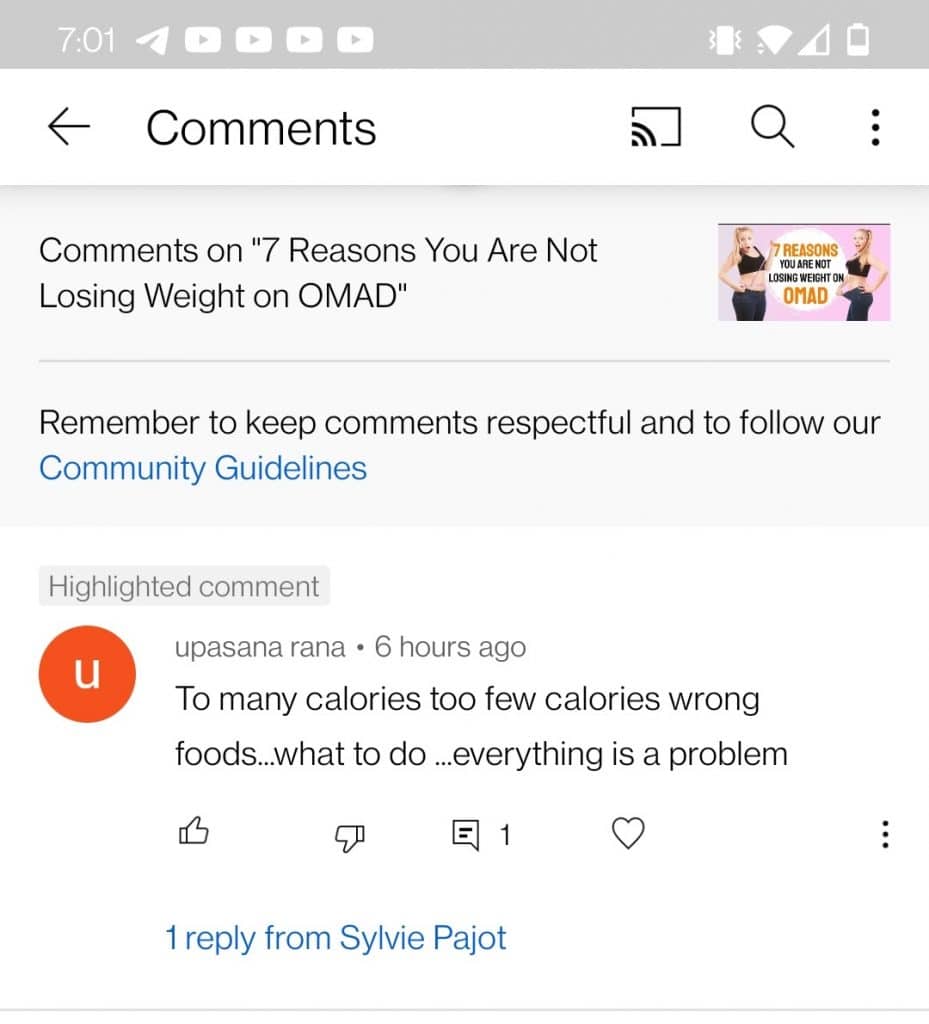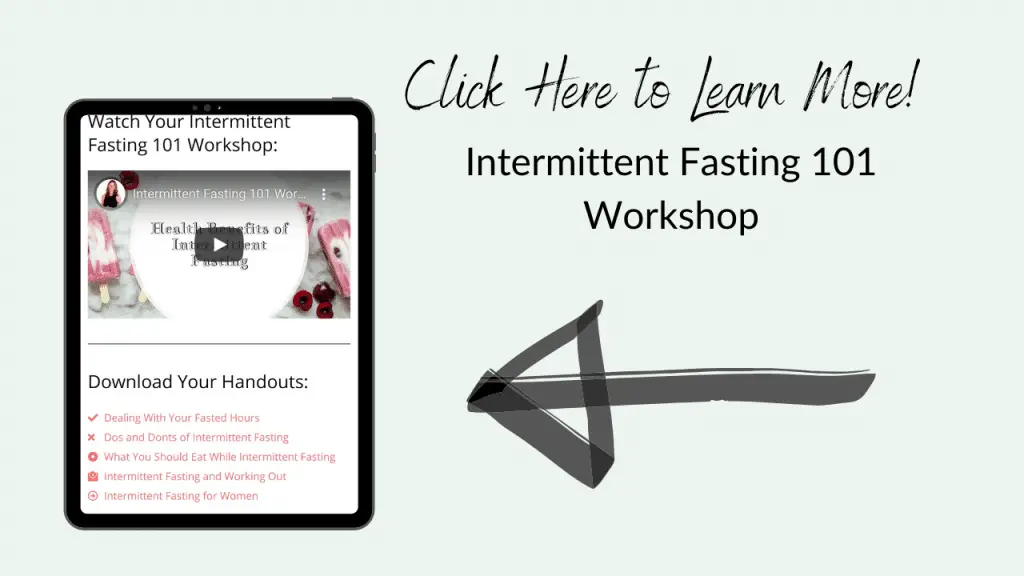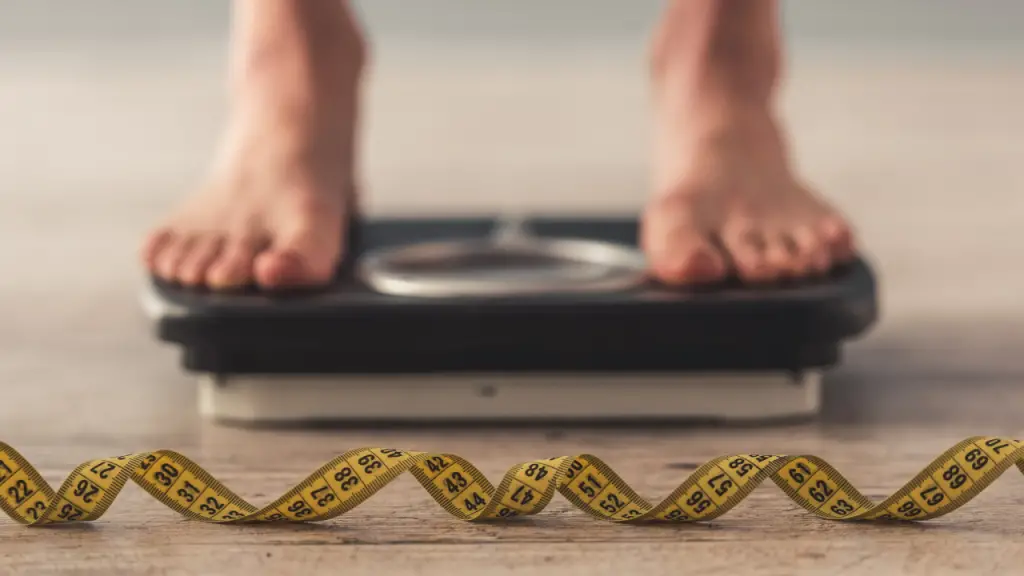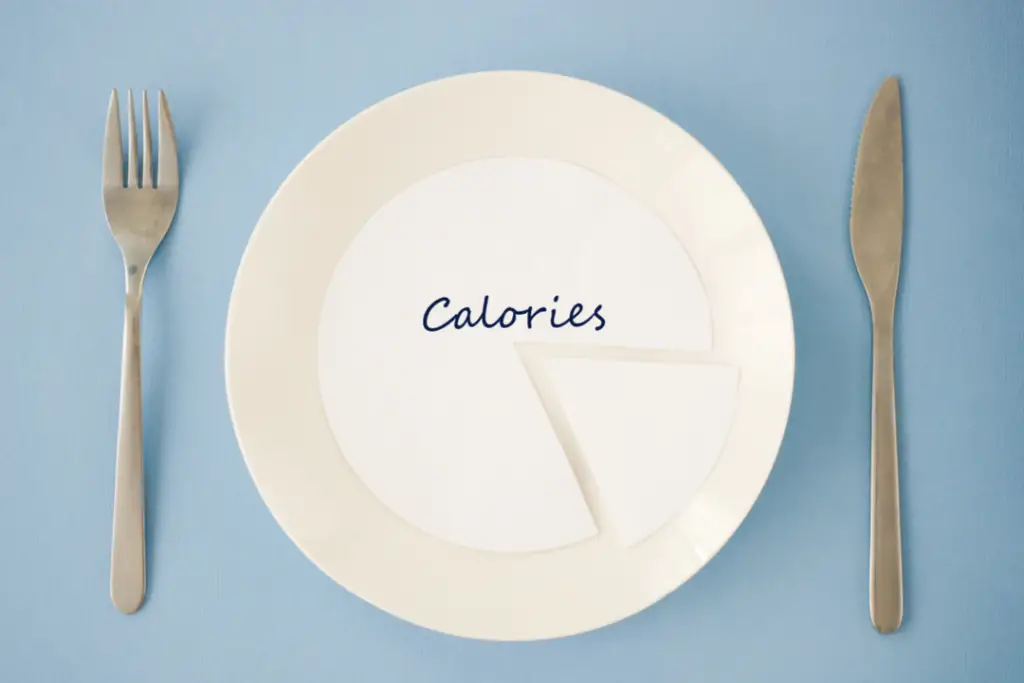My blog post/video Top 7 Reasons You Are Not Losing Weight on OMAD (One Meal a Day) ranks among my most popular ones. a viewer commented on the video last week and it gave me the idea to create this article about what to do when OMAD isn’t working. Here’s the comment:

True right? The 7 reasons cover pretty much everything! It’s hard to know what to try first and how to overcome a weight loss plateau when OMAD isn’t working.
Today, I will share three simple things you can try that should help.
What It Means When OMAD Isn’t Working
Before I give you my three simple steps, I want to say a quick word about what it means when OMAD isn’t working. I have heard women say OMAD wasn’t working for them because they had lost only 5 lbs in a month!
I feel it’s important to make sure you have realistic expectations. Weight loss takes time, particularly if you are closer to your goal weight (20 lbs or less to lose). Losing 5 lbs in a month is amazing! Not losing any weight in one month is perfectly normal too! If you enjoy OMAD and don’t lose any weight in one month, don’t worry about it! Just keep going! Try my suggestions if you are struggling, feeling deprived, and not enjoying OMAD.
I lost over 20 lbs during perimenopause over one year using the Warrior Diet. I feel amazing, and I know I will keep it off because I love my new lifestyle. However, sustainably losing weight is a long-term project. For many months, I wouldn’t lose any weight. Then, in one month, I would lose 4 or 5 lbs. My average was probably 2 lbs a month.
If you want to learn more about my experience and losing weight using intermittent fasting, check out my Intermittent Fasting 101 Workshop.

3 Simple Things to Try When OMAD Isn’t Working
I promised I would give you simple solutions fast, so here we are. If you are not losing weight, and feel that OMAD just isn’t working for you, here’s what you can try:
1. Become Fat-Adapted
I always recommend women start with a modified fast before experimenting with intermittent fasting. Have you been around on my site before? If so, you know that I use a modified fast or a keto cycle to help my clients become fat-adapted. Let me explain briefly:
Modified fasting is based on the Fasting Mimicking Diet by Dr. Valter Longo. It’s a 5-day fast that requires you to restrict your calorie intake severely. You will consume about 40 percent of your regular calorie intake and follow a specific macronutrient ratio to induce autophagy, the process by which your body repairs itself. Read Modified Fasting: How You Can Benefit From Fasting Without Starving or Lose Weight and Feel Great Using This Simple 7-Day Intermittent Fasting Keto Meal Plan.
Plus, my 30-Day Intermittent Transformation Program comes with a full recipe book, quick and easy meal plan, and spreadsheet to create your own if you wish.

I suggest you put OMAD aside and focus on two or three modified fasts once a month (which means you will be doing this for 2-3 months). Experiment with intermittent fasting during the rest of the month, but take the pressure off yourself for a bit. Don’t try to adhere to a strict fasting window like the 23:1 method. If you don’t feel hungry until dinnertime, that’s fine, don’t eat. If you feel hungry, then do eat.
In my program, I have women start with the 20:4 method four days a week. I find that’s a good way to take some pressure off and learn to listen to your body as you get started with modified and experimenting with intermittent fasting. The focus at first needs to be healing. Stop obsessing over the scale as much as possible. Plan your two or three modified fasts, and be kind to yourself. You are doing something amazing for your body.
How to Plan Your Two Modified Fasts
I have a few pointers to give you to help you facilitate your modified fasts:
- Make sure your 5-day modified fast is sometime during the first two weeks of your cycle. It’s easier to fast at the beginning of your cycle. Many women struggle with stronger food cravings after ovulation.
- Write down your two modified fasts on the calendar and pick days free from social obligations as much as possible. Things come up, of course, and if that happens, explain what you are doing and bring your food.
- Do the third modified fast only if you feel you need it. If you loved your two modified fasts and could tell it was just what you needed. Do it again. If you dreaded it a bit and found it very challenging, it’s ok. You don’t need to do a third one. Two is most likely enough.
- When you do your modified fasts, work on waiting longer before having your first meal. I find it helps a lot to eat later in the day. Since you are consuming much fewer calories, waiting to eat most of them later makes you feel more satisfied when you go to bed (I know many of us struggle with evening snacking, etc.)
2. Biohack With Intermittent Fasting
So, OMAD isn’t working, and you feel deprived and miserable? Well, try another intermittent fasting method! That’s where biohacking comes in! There are so many ways to implement intermittent fasting. Not only, can you find a method that works for you, but you have the flexibility to change things over time if you feel like one method is no longer making you feel your best—most women who hit a plateau after doing OMAD for a while benefit from Alternate Day Fasting.
However, if you find fasting for more than 24 hours too challenging, try the 5:2 method or the Warrior Diet.
Whatever you do, give it some time. Be patient! Find a method you enjoy and can envision yourself practicing for the rest of your life. Whatever intermittent fasting method helps you achieve your weight loss goal will have to become your new way of life. Moreover, a Ketone Monitor will enable you to find your optimal fasting window. I recommend a fasting method that will give you a reading of 1.0 mmol/L on a ketone monitor a few times a week. Receive a 15 percent discount with my affiliate link.

3. Clean Up Your Diet
Next, your diet could be the missing piece in your progress. Perhaps you enjoy too many restaurant meals and processed foods? The joy of intermittent fasting is that you will get more food freedom than you ever thought possible. However, consuming empty calories and inflammatory foods doesn’t benefit anyone. Take an honest look at your food intake and see where you could implement some tweaks. For this purpose, you may enjoy reading Intermittent Fasting Food List: Yes and No Foods for Weight Loss Success and My 7-Day Intermittent Fasting for Weight Loss Meal Plan.
In Summary
I hope you found this article helpful! I know it can feel overwhelming and frustrating to put some much effort into weight loss and not see the results you are expecting to achieve. Please remember that weight loss is a journey that ultimately you are on for health reasons. We all want a hot summer body, but the true benefits of losing weight are to increase your longevity and your overall well-being. It takes time and patience. It’s a process. I am confident that if you nourish your body with whole foods, do 2-3 modified fasts each year, and add some keto cycles into your intermittent fasting regimen, you will start seeing exciting results.





